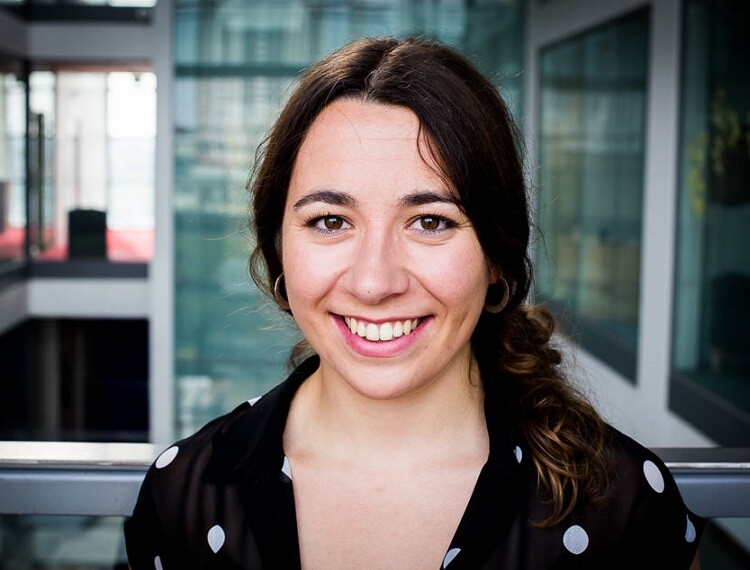Education for Sustainable Development needs to be prioritised to ensure sustainability goals are met

A lot has happened: The Green Jobs Taskforce published its recommendations; IFATE has established an (albeit advisory) sustainability framework; the Department for Education has set up a new Climate Change and COP26 team, and there’s a whole section dedicated to green jobs and skills in the Government’s Net Zero strategy.
I’ve argued before in FE News that all learners can be sustainability learners. Therefore it’s particularly welcome that in the, published on October 19 2021, lies recognition that a critical part of ensuring we’re able to meet our national and international sustainability goals, including our climate targets, is by providing “high-quality education and training [learners] need to work in a future green career, through improving teacher training and development in STEM and other key subjects, and expanding post-16 training programmes in line with the needs of the green economy”.
Sustainability for Further Education
This is something that the Further Education (FE) workforce also recognises. Earlier this year the Education and Training Foundation (ETF) published a report on the Experiences of Education for Sustainable Development (ESD) in the Further Education (FE) and training sector. The report is based on a survey of over 800 teachers, trainers and leaders in the FE sector, which includes colleges and independent training providers.
The report revealed the majority of respondents (85 per cent) agree that the FE and Training sector has a valuable role to play in the achievement of sustainability goals. Nearly all respondents (94 per cent) believe that all UK learners should be taught about sustainability issues. This is also echoed in public sentiment, with a Climate Assembly report showing that people believe the curriculum doesn’t sufficiently address sustainability issues – particularly climate change – and would like to see this change.
The Government’s Net Zero strategy recognises that teachers will require a strong understanding of sustainability. One way this is being progressed is the inclusion of ESD explicitly within the revised apprenticeship standard for FE teaching (Level 5 Learning and Skills Teacher), which is soon to be published. For the first time, all FE teachers training via an apprenticeship will be required to integrate sustainability into their teaching, including through modelling sustainable practices and promoting sustainable development principles in relation to their subject specialism. Early estimates from the Trailblazer Group suggest around 1,500 teachers each year could train using this apprenticeship standard.
The Net Zero strategy states that this standard will soon be incorporated into all future FE teaching qualifications, so that all teachers across all subject areas will be able to embed and promote sustainability in their teaching. This is great news, but of course will only reach those going through initial teacher education. The c.90k educators already teaching also need support.
Training the trainers
As a workforce development and professional standards organisation, the ETF obviously has an interest in what this means for those who work in the FE and Training sector. So, we also asked educators how well equipped they were for making this transition – for bringing education for sustainable development into their teaching and learning practice. Three quarters (74 per cent) of respondents who have a teaching role felt they haven’t received adequate training to embed sustainability in their professional practice. This shows an urgent need to invest, not just in ESD for initial teacher education, but also professional development for the existing FE workforce. This is in addition to relevant organisational development and leadership support for the sector.
Teachers need not just a technical understanding of sustainability issues, but also training that empowers them to effectively incorporate education for sustainable development within their teaching across all levels and subjects. This is to enable teachers to understand where, and how, to access accurate information, and to consider both the negative impacts and positive solutions relating to sustainability within the context of their level/subject of expertise so that climate education can be appropriately and meaningfully incorporated into their teaching.
But it’s not just a case of training. Our research explored the barriers to actively incorporating ESD into educator’s professional practice. The top three reasons given were the lack of ESD content in the curriculum (54 per cent), lack of guided learning hours (39 per cent) and lack of personal knowledge (35 per cent). Training would absolutely help with the latter, but there are other areas where change is needed.
Only 35 per cent of respondents agreed that curriculum requirements support delivery of sustainability issues. This is a significant signal that the curricular to which practitioners are teaching are barriers to quality ESD. A forthcoming ETF publication, Leadership for ESD in the FE curriculum, explores this in more detail.
Lack of guided learning hours is of course related to this, in that it’s a core part of curriculum design; however, there’s a hidden message which won’t come as a surprise to most FE News readers. There’s a sense of resentment from staff at the suggestion that further elements need adding to already full programmes of work, without sufficient resource being allocated to enable teachers to do this well. This didn’t come through as a quantified result of the research, but through the comments and open-ended questions people responded too.
Innovation to incorporate
It’s not just investment in the skillset of the FE and training sector workforce that’s needed, but curriculum reform and capacity building too. This will give educators the time, space and permission to engage with CPD in ESD, adapt their work, pilot innovations and connect with others to share creative, high quality and impactful approaches to ESD.
Despite the barriers, there’s already a lot of ESD taking place across the sector – we’re not starting from scratch. Some 61 per cent of respondents (who teach a diverse range of subject specialisms) stated that they already actively incorporate sustainability themes into their professional practice to some extent. We invited those respondents who were incorporating ESD in their work to share examples of how they do this. Respondents from diverse subjects (that go beyond those where sustainability issues have traditionally featured namely science and geography) shared examples of operational changes they’d made, how they’d embedded ESD within their subject specialisms, and how they’d used different sustainability themes and pedagogical approaches in their teaching.
Examples spanned changes to curriculum content, co-curricular activity, community partnerships and working culture. This reinforces that all learners can be sustainability learners and provides much inspiration for both practitioners and providers looking to take a whole-institution approach to ESD. I’m still feeling optimistic, and with the spotlight firmly on sustainability in the run up to the UK’s presidency of COP26, the international climate change conference taking place in Glasgow this November, I anticipate more support to firmly embed ESD across not just teaching and learning practice, but the whole FE sector. The ETF, for one, will be doing its bit.
Charlotte Bonner – National Head of Education for Sustainable Development
You can find out more about our approach to ESD and the support we have on offer for the FE and training sector by visiting the ETF website.










Responses